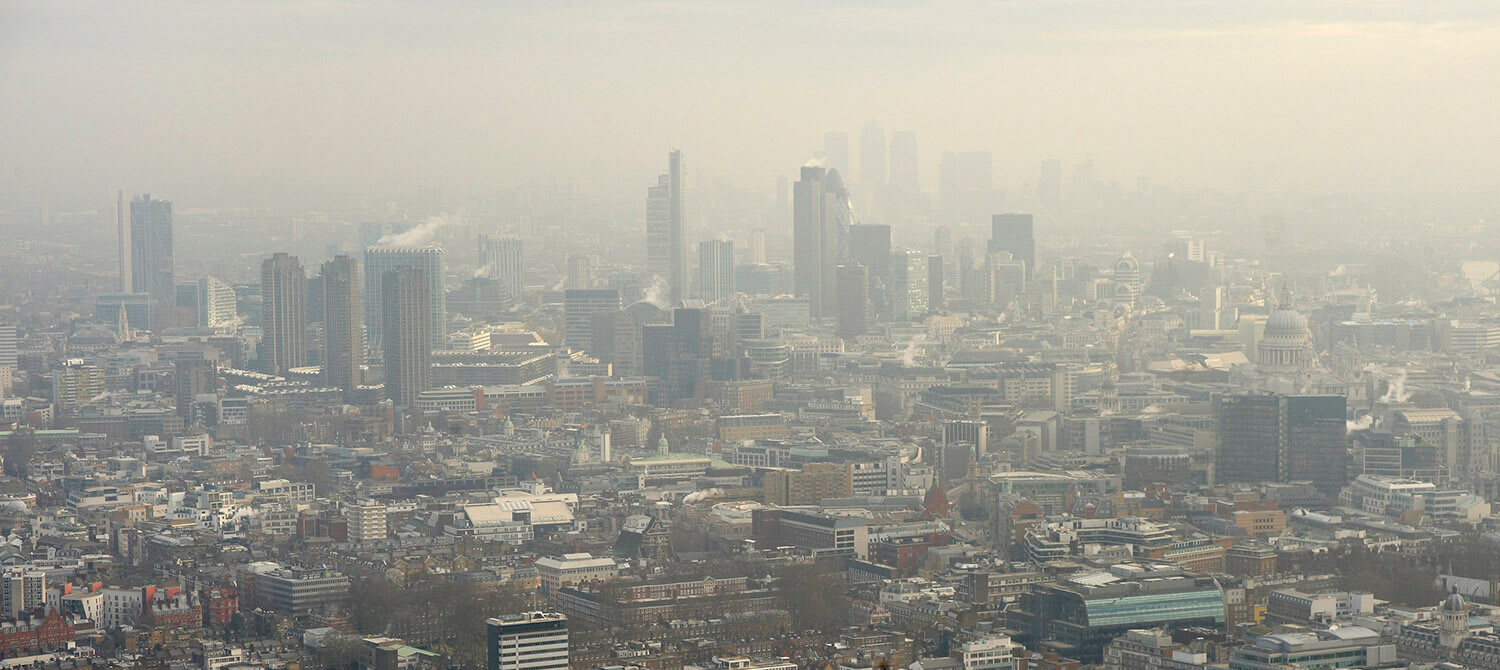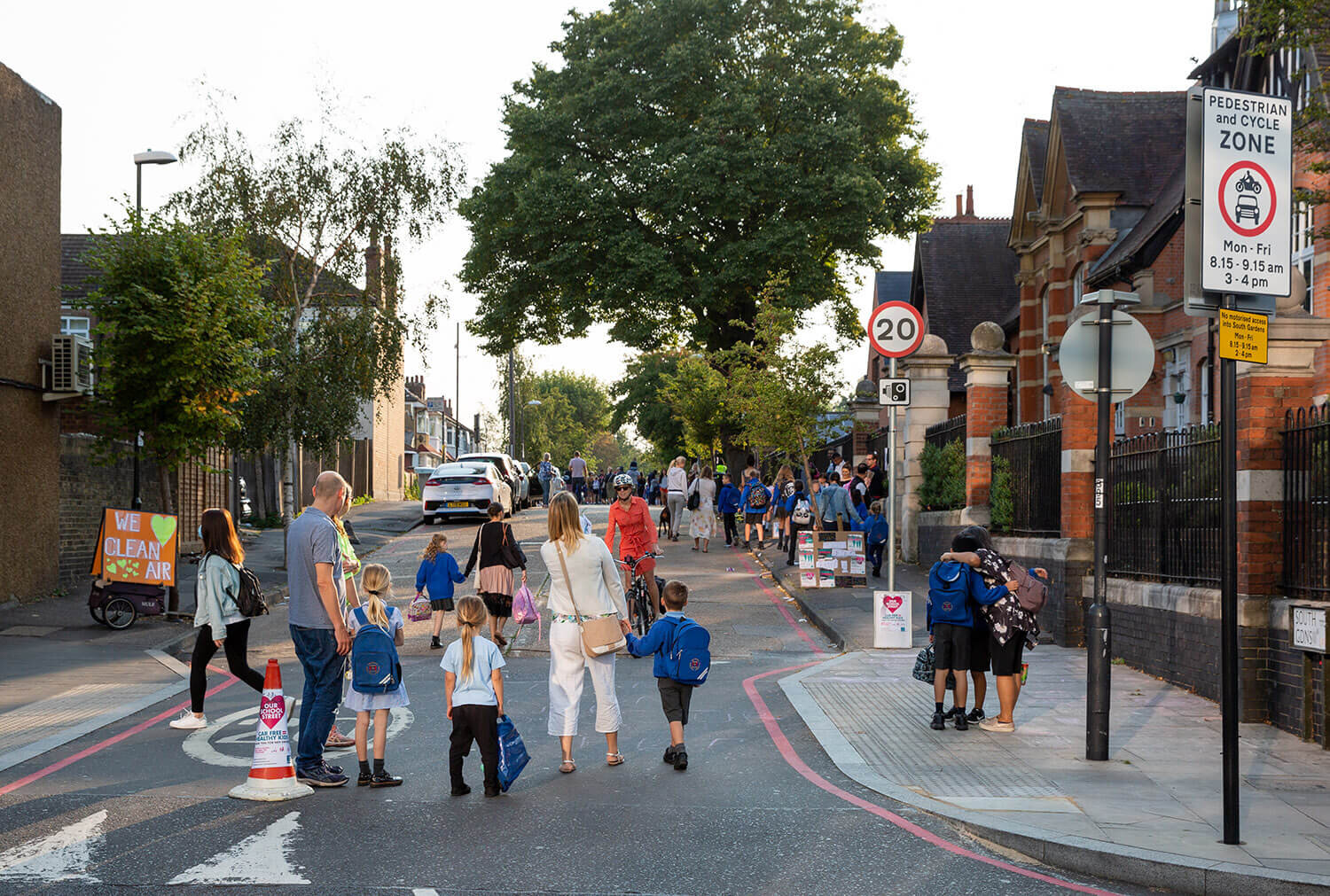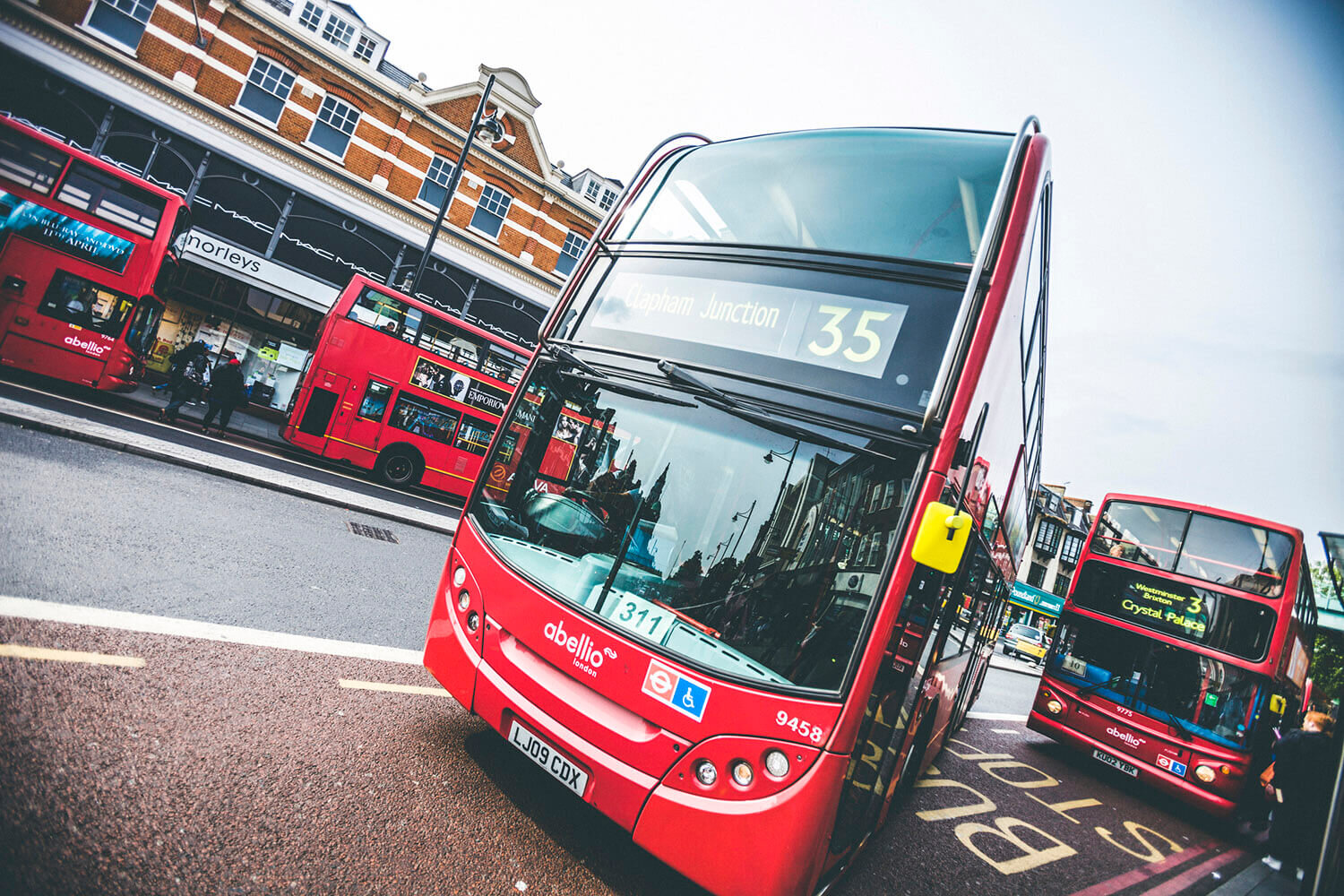
What is Air Pollution?
Air pollution is the release of particles and noxious gases into the atmosphere. These emissions have a huge impact on human health.
Air pollution’s impact on health
There are clear associations between air pollution and a number of conditions including heart and lung disease, respiratory conditions, dementia, miscarriage, stunted lung growth in children, teenage psychotic episodes, and reduced cognitive ability.
The two pollutants of most concern are nitrogen dioxide and particulate matter. Other dangerous pollutants include ozone and sulfur dioxide.
Nitrogen dioxide (NO2)
Road transport is estimated to be responsible for about 50% of NO2 emissions in London, and 49% of nitrogen oxides in the UK. Diesel engines, once promoted as more environmentally-friendly alternatives to petrol, have contributed to the high levels of NO2.
Imperial College amongst others has strong evidence that NO2 is harmful to health, with the most common outcomes being a shortness of breath and a cough. It inflames the lining of the lungs and reduces immunity to lung infections. This is worse for people with asthma.
In London, NO2 levels regularly exceed legal limits, which state that the NO2 annual mean value may not exceed 40 micrograms per cubic metre (µg/m3). In Brixton, London in 2024 that figure was 46 µg/m3. All of London breaches the more stringent (2021) World Health Organisation guideline limits for NO2.
Particulate matter (PM2.5, PM10)
Particulate matter is tiny particles of liquids or solids such as metals or rubber suspended in the air. They mostly originate from wood burning, engine wear, tyres and brakes but can include wind-blown dust. In the UK road transport and domestic combustion are two of the biggest contributors to PM2.5 emissions. In 2023, road transport contributed 21 per cent of exhaust and 17 per cent of non-exhaust PM2.5 emissions, and domestic combustion contributed 20 per cent of all PM2.5 emissions.
According to the WHO, air pollution-related deaths are most closely linked to PM emissions. The majority of particles that can penetrate the airway are too small to see but are present in air that seems clean. Particles smaller than about 10 micrometers, (PM10, about 1/10 of a hair wide), enter the body via the lungs and are too small to be filtered out. They can then settle anywhere in the body, including the brain.
Electric vehicles (EVs)
Although EVs offer improvements on NO2 and carbon dioxide emissions, they continue to emit damaging PM due to tyre wear and the fact that they are heavier than internal combustion engine cars.

“Road transport is estimated to be responsible for about 50% of nitrogen oxide emissions in London.”
How can we tackle air pollution?
The Environment Act, which replaced European Union laws following the UK leaving the EU, was finally passed into law in November 2021. Alongside many other groups and organisations, Mums for Lungs campaigned for WHO targets to be enshrined in this law, particularly on levels of PM 2.5. This did not happen however.
The Government consulted on long term targets for PM2.5 in 2022, eventually deciding to aim to meet the outdated WHO limit of 10ug/m3 PM2.5 by 2040. The Act in its current form is unlikely to make a significant difference to the levels of air pollution that millions of UK citizens are exposed to.
National legislation
Clean Air Zones
Clean Air Zones encourage a move to less polluting vehicles and help to reduce traffic. Charging Clean Air Zones are some of the most effective schemes to reduce air pollution: in Inner London roadside nitrogen dioxide (NO2) reduced by 47 per cent as a result of the Ultra Low Emission Zone; in Bath, NO2 reduced by 26% within the zone and by 27% in the urban area outside the zone, and in Birmingham NO2 emissions reduced by 17%.
School Streets
School Streets are proven to reduce traffic and increase safety; not only that but travelling actively to school has been shown to improve learning outcomes.
With over 600 in London and with more on the way both in the capital and across the country, we know this scheme is a pragmatic and popular solution to cleaning up the air for children on their way to school.
We want to see all feasible schools, secondaries as well as primaries implementing the scheme, with camera enforcement. We also need alternative options for those schools that cannot have motor traffic restricted on their road, including green screens to reduce the level of pollution within the school grounds, moving school entrances and playgrounds, and implementing controlled parking zones from 8:30am to 6pm to discourage parents from driving to school, in a radius of about 300m around schools.
We want to see a diesel-free London by 2030, to protect the health of the next generation. Research by the Environmental Defense Fund (Europe) highlights that diesel is the single biggest contributor of nitrogen oxides and nitrogen dioxide in London. Phasing out diesel cars would be a bold and effective step towards cleaning up our air.
From 2030, new vehicles with internal combustion engines, such as petrol, diesel, and LPG cars, will be banned across the UK, with sales of new hybrid vehicles set to be banned from 2035. London local authorities have it in their power, in conjunction with the Mayor of London, to implement measures to lose diesel from our roads faster, to help consign diesel to the past in advance of this phase-out.
London boroughs can fast-track the phase-out of diesel vehicles at the local level by:
Phasing out new residential parking permits for diesel cars
Introducing emissions-based parking tariffs
Creating zero-emission loading bays and taxi ranks
Setting a vision and publicly committing to a diesel-free borough by 2030
Diesel phase-out
Government has ruled out a ban on wood burning, favouring an educational approach. In the 2023 Environmental Improvement Plan there was an aim set to reduce the amount of smoke that new stoves can emit in Smoke Control Areas, however this did not pass into law.
Domestic combustion contributed 20 per cent of the UK’s PM2.5 emissions in 2023, demonstrating that the burning of wood is a growing problem that needs more than an educational approach.
We are calling on the Government to:
Phase out the sale of new wood stoves by 2027, and ban the use of wood burners unless the only source of heat by 2032 at the latest.
Label wood burning stoves as harmful to better educate consumers.
Provide effective powers to local authorities to stop unlawful burning, with all wood burners registered with local authorities to enable enforcement.
Launch a public health campaign to raise awareness of the dangers of wood burning stoves.
Wood burning

“TfL’s report into the first year of the Inner London ULEZ revealed a 47% drop in roadside nitrogen dioxide levels.”
What we want the Government and Local Authorities to do
FREQUENTLY ASKED QUESTIONS
Find out the answers to some common air pollution questions.




